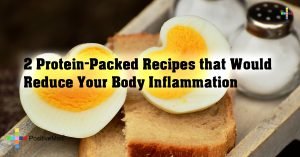
Do You Ever Wondered About Bread?
10 Interesting Facts about Bread
1. For thousands of years bread has been referred to as the staff of life. Most bakers made enough bread to last one week at a time because bread baking is time consuming. The twist tie color on the bread packaging indicates the day the bread was baked. The practice of having different color twist ties for different days of the week is to aid the person stocking the shelves to determine what bread is older and needs to be removed from the shelves.
2. Water is absorbed by bread, it follows that eating bread can lead to your body being taken over by this absorptive food product, turning you into a soggy person since the human body is more than 90% water. Avoiding bread is helpful to stay hydrated.
3. More than 90% of violent crimes are committed within 24 hours of eating bread.
4. The average life expectancy was less than 50 years in the 18th century when virtually all bread was baked in the home, infant mortality rates were unacceptably high, many women died in childbirth, and diseases such as typhoid, yellow fever, and influenza ravaged whole nations.
5. If you are watching your weight bread is often regarded as a food to be avoided. Butter, cheese, and spreads are high in fat and can be the culprit when it comes to piling on extra pounds. The creation of sliced bread led to an increase in the consumption of bread due to its convenience, which ultimately led to an increase in sales of spreads. The whole-wheat varieties of bread can be high in fiber, keeping you healthy and helping you to feel fuller for longer. To ensure you only eat the freshest and healthiest ingredients making your own bread is the best way.

6. Molds love bread and under the right conditions can reproduce rapidly. Molds grow in warm, dark, moist conditions. Store your bread in a cool dry place to avoid mold.
7. In ancient times people often used a rolled-up piece of white bread to erase graphite before erasers were invented. Today to lighten charcoal or pastel marks some artists still use breads.
8. All yeast-leavened bread was a type of sourdough bread as they didn’t understand that it wasn’t the yeast itself giving bread a sour taste before the 19th century. They discovered this fact with advancements in microscopes and were able to produce strains of yeast packaged and sold without lactobacillus, which is what gives sourdough bread the sour taste.
9. A crumb is the inner part of the bread encased by crust, small bits of this part of the bread are called crumbs.
10. Breads are consumed by all classes of people. They were often named after the class of people who typically consumed a given type in medieval times in Western Europe. There were Knight’s loaf, squire’s loaf, varlet’s loaf, court’s loaf, pope’s loaf, common loafs, table loafs, etc.





